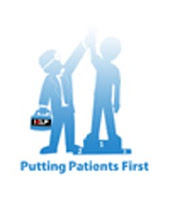When plain language isn’t enough
To ensure that the intended users of health information understand it, communicators must know how to reach them. Writing and speaking clearly are critical steps to achieve that goal. At the same time, communicators must also be aware of additional barriers to understanding. Intended users of the information may speak a different language or be unfamiliar with the situation; there may be critical cultural differences between sender and receiver; and intended users may have communication or development disorders.
Limited English Proficient speakers – Plain English won’t necessarily help individuals who do not speak English as their primary language and who have limited ability to read, write, speak, or understand English. Simply translating health information, such as written medical instructions, into a person’s native tongue does not guarantee that non-English speakers will be able to read or understand it. To better ensure understanding, health information for people with limited English proficiency needs to be communicated plainly in their primary language, using words and examples that make the information understandable in their language.
Cultural differences – Culture affects how people understand and respond to health information. In addition to the use of plain language, the cultural competency of health professionals can contribute to health literacy. The Office of Minority Health, U.S. Department of Health and Human Services, defines cultural competency as the ability of health organizations and practitioners to recognize the cultural beliefs, values, attitudes, traditions, language preferences, and health practices of diverse populations, and apply that knowledge to produce a positive health outcome. Cultural competency includes communicating in a manner that is culturally and linguistically appropriate.
Lack of knowledge and experience – People with limited health literacy skills often also lack knowledge or have misconceptions about critical health topics, such as the body, its functioning, and the nature and cause of disease. Without accurate and appropriate knowledge, they often fail to understand the importance of lifestyle factors—diet and exercise, for example. They may read commonly used directions, like “take on an empty stomach,” and not understand what the terms mean (17). Even with clear directions, if the audience has no context or prior experience, they can still misunderstand. For example, when instructions say, “Give two drops, three times a day for earache,” it may not be clear whether the drops should be swallowed or placed in the ear.
Communication and developmental disorders – Plain language and other clear communication techniques may not be effective or appropriate for audiences with communication or developmental disorders. Approximately one in six Americans has a disorder or difference in communication resulting in unique challenges.1 There are also challenges for individuals suffering with mental health diseases and disorders that impair or obstruct clear communication, no matter how plain the language. These individuals will require strategies that are tailored to their needs and abilities. Developing improved ways to communicate health information to these audiences is a crucial component to addressing health literacy.




No comments:
Post a Comment